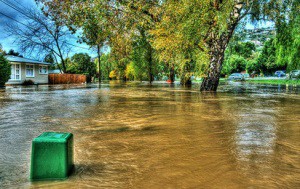Important Information About Hurricanes and Flood Insurance
 Unfortunately, countless Americans learn the hard way that their homeowners’ insurance does not cover property damage that floods and hurricanes cause. If you live in a moderate- to high-risk area, you should buy a separate flood insurance policy to cover your home and valuables.
Unfortunately, countless Americans learn the hard way that their homeowners’ insurance does not cover property damage that floods and hurricanes cause. If you live in a moderate- to high-risk area, you should buy a separate flood insurance policy to cover your home and valuables.
Storms are capable of harming even the sturdiest homes. Although strong winds, lighting and hail pose serious risks, flooding from heavy rains presents the greatest threat. Fortunately, water damage restoration services can remedy the most catastrophic of accidents, reducing the risk of mold growth and property damage. If you’re in need of Seattle water damage restoration services, Allied Restoration Company is here to help. Call us at 425-458-5756 today.
This article will explain how to get flood insurance and what it covers.
Where to Buy Flood Insurance
Homeowners can purchase flood insurance through the National Flood Insurance Program (NFIP), which the Federal Emergency Management Agency (FEMA) manages. Flood insurance is available to any homeowner who lives within the NFIP-participating communities.
Get Property and Contents Coverage
A flood insurance policy through the NFIP allows up to $250,000 maximum coverage for property and $100,000 for contents. Property and contents coverage must be purchased separately. If you want additional coverage, excess flood insurance is available from private insurers. According to the NFIP, an average policy costs less than $570 per year.
Even if you live in a moderate- to low-risk area, you may want to buy flood insurance anyway. According to FEMA, nearly 25 percent of all flood insurance claims come from areas with low to moderate flood risk.
What’s Covered?
Flood insurance will pay the actual cash value for contents, which means it will give you the amount of money to replace the lost or damaged property based on its actual depreciated value as used goods. As far as the property goes, you can opt for replacement cost coverage if you’re insuring a single-family home that is your primary residence. Available coverage is at least 80 percent of the full replacement cost of the building or the maximum value available under the NFIP.
What Isn’t Covered?
Flood insurance doesn’t cover everything, so before you choose a plan, it’s important to know the limitations. For instance, the water must have come from outside of your home. This means that if a pipe bursts and leads to flooding, your flood insurance will not cover the damage costs. Fortunately, homeowners’ insurance will.
Landscaping and swimming pools are not covered, either, and small floods do not count. In order to be considered a flood, the water that causes damage must have covered at least two acres of land or have affected another property. So, if your home sustains mold or mildew damage, your policy will not cover it if it was caused by a “small” flood.
When to Call the Professionals
If you’ve recently suffered a flood and do not have flood insurance, then call Allied Restoration Company to clean up the mess. Allied combats the destruction water causes while providing preventative measures against other threats like mold growth. Call us at 425-458-5756.





